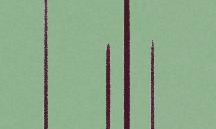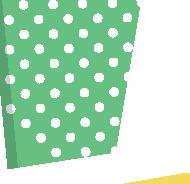idioms the game




























Object of the game
The Idioms Game is aimed at students who already have a basic knowledge English and who are at level A2 - B1 on the Common European Framework. Players discover the meaning of some very common idiomatic expressions, which can be used in a variety of situations. Idioms will no longer be a mystery for students. They will learn not only to recognise idioms, but also to remember them and use them correctly. Idioms help students to understand some aspects of British culture better and are fundamental to understanding how to use English in the best way possible.
Contents
The game consists of:
132 cards divided into two decks. The first deck contains picture cards. Each card represents an idiom. Each card in the second deck contains an idiom and three different meanings, A, B and C. Only one option is correct and it is written in bold.
The cards can be identified by the colour of the reverse side. Each deck is a different colour, which makes it easy to identify them. In both decks the cards are numbered from 1 to 66. This makes it easier for the game leader to match the picture card with the idiom card.
The instruction booklet contains instructions and suggests different ways of using the game in the classroom, at home and during online courses.
How to play
First the game leader decides whether to play with all the cards or only with some of them. The two decks are then separated and the game leader distributes the picture cards amongst the players. Then the cards with the idioms and the options are placed face down in the centre of the table.
At this point the youngest player starts the game by taking an option card and reading the idiom aloud. The player with the corresponding picture card puts their hand up, listens to the three options and tries to say which one is correct. If the guess is correct, the player takes both the picture and option card and the player on the right has the next turn. If the guess is wrong, the player on the right has the opportunity to guess the correct option. The player who guesses correctly takes both cards. The winner is the player or team which has the most matching pairs. The game continues until all the cards have been matched or for an established period of time.
Other suggestions
• FIND THE PAIR!
This game is useful to become familiar with the cards and the idioms in the game. The game leader must first of all decide whether or not to divide the class into small groups (with equal numbers of players if possible and with no more than 4/5 people in each group) or to let players play individually, as well as whether or not to use all the cards. Once this has been decided and the cards have been shuffled, they should be placed face down in full view on the table. At this point the youngest player starts the game by turning over a card from
one deck and then from the other, reads the idiom aloud and if the two cards correspond, keeps the pair of cards and another player or team takes a turn. If the cards do not correspond, the player turns the cards over again and leaves them in the same place. Then another player or team has a turn. The player or team with the most matching cards is the winner. The game continues until all the cards have been matched or for an established period of time.
• QUIZ
This game only uses the option cards. The cards are placed in the centre of the table. The youngest player starts the game by taking a card and reading the idiom and the options to the player sitting on the right. Then the other player guesses the meaning of the idiom and if the answer is correct, takes the card. If the answer is wrong the card is put at the bottom of the deck. In both cases the player on the right then takes a new card and reads the text to the next player on the right. The game continues in this way until all the cards are finished or for an established period of time. The player with the most cards is the winner.
• MYSTERY PICTURE
For this game only the picture cards are used. They are placed face down in the centre of the table. The youngest player starts the game by picking up a card and reading the idiom aloud and explaining the meaning. If the game leader confirms that the meaning is correct, the player wins the card, otherwise it goes to the bottom of the deck. In both cases it is the turn of the player on the right. The game continues in this way until all the cards are finished or for an established period of time. The player with the most cards is the winner
In this game only the picture cards are used. Each player is given a card by the team leader or picks a card randomly. The players are then given a specified amount of time to use the idiom correctly either in a spoken or written sentence. Once the time is up each sentence will be read aloud and the player who has managed to use the idiom correctly wins the card. The game can be repeated in the same way with other cards. The winner is the player with the most cards.
Variant 1
Instead of using the picture cards, the option cards are used. In this way the players know what the correct answer is. The difficulty lies in trying to make a sentence or a short story which includes the idiom.
The game can be made more difficult by giving the player more than one card at the same time. The player then has to put both the idioms into a story. The player who tells the most grammatically correct and funniest story is the winner.

Variant 2
The structure of the game is the same as the previous variant but instead of using the idiom, the players have to express the same concept using different words.












